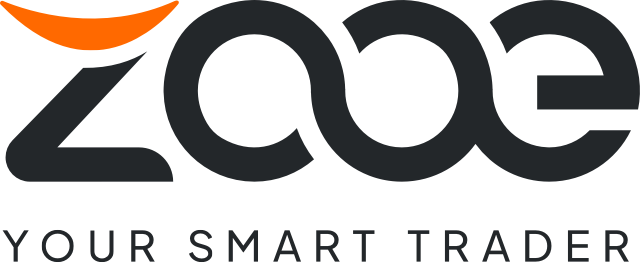Exploring the Differences between Forex Demo and Real Accounts
author: 2024-07-12 click:93
There are several key differences between forex demo accounts and real accounts that traders should be aware of:
1. Trading Conditions: Demo accounts often have more favorable trading conditions compared to real accounts. This is because brokers want to attract new clients by offering a simulated trading environment with low spreads, fast execution speeds, and no commission fees. In real accounts, traders will face the actual market conditions, which may include wider spreads, slower execution, and commission charges.
2. Emotions: Trading with a demo account does not involve real money, so traders are less likely to experience emotions such as fear, greed, or stress. With real accounts, traders are risking their own money, which can lead to emotional decision-making and impulsive trading behaviors.
3. Slippage: Slippage is the difference between the expected price of a trade and the price at which it is executed. While slippage can occur in both demo and real accounts, it is more common in real accounts due to the presence of market liquidity and volatility.
4. Psychological Impact: Trading with real money has a psychological impact that cannot be replicated in a demo account. The fear of losing money or the thrill of making a profit can affect a trader's decision-making process and risk tolerance.
5. Order Execution: Demo accounts usually have instant order execution, as there is no real money involved. In real accounts, order execution may be delayed or rejected due to market conditions, leading to potential losses or missed opportunities.
6. Trader Behavior: Traders may adopt a more relaxed approach when using a demo account, as there is no financial risk involved. In real accounts, traders tend to be more disciplined and cautious in their trading decisions.
Overall, while demo accounts are a useful tool for learning and practicing trading strategies, traders should be aware of the differences between demo and real accounts to avoid any surprises when transitioning to live trading.
When it comes to trading foreign exchange, there are two main types of accounts that traders utilize: demo accounts and real accounts. While both serve the purpose of allowing individuals to participate in the forex market, there are some key differences between the two. In this article, we will explore the distinctions between forex demo and real accounts.
A forex demo account is a simulated trading account that allows traders to practice trading without risking any real money. These accounts are typically offered by brokers and come with virtual funds that can be used to trade in real market conditions. Demo accounts are a valuable tool for beginners to familiarize themselves with the forex market, test trading strategies, and gain confidence before transitioning to a real account.
On the other hand, a forex real account requires traders to deposit real money in order to trade. This means that profits and losses are real, which can lead to a higher level of emotion and psychological pressure compared to demo trading. Real accounts provide traders with the opportunity to experience the true dynamics of the forex market and can offer a more authentic trading experience.
One of the main differences between demo and real accounts is the level of risk involved. With a demo account, traders can experiment with different trading strategies and techniques without the fear of incurring financial losses. In contrast, trading with a real account involves actual money on the line, which can lead to greater caution and decision-making when entering trades.
Another distinction between demo and real accounts is the psychological aspect. Trading with real funds can evoke emotions such as fear, greed, and anxiety, which can impact decision-making and overall trading performance. Demo accounts do not elicit the same emotional response, allowing traders to focus solely on their strategy and execution.
In conclusion, both demo and real accounts have their own unique benefits and drawbacks. Demo accounts are ideal for beginners to practice trading without financial risk, while real accounts provide a more authentic trading experience with real money on the line. It is important for traders to understand the differences between the two account types and choose the one that aligns with their trading goals and risk tolerance. By exploring the disparities between forex demo and real accounts, traders can make informed decisions and improve their overall trading experience.
1. Trading Conditions: Demo accounts often have more favorable trading conditions compared to real accounts. This is because brokers want to attract new clients by offering a simulated trading environment with low spreads, fast execution speeds, and no commission fees. In real accounts, traders will face the actual market conditions, which may include wider spreads, slower execution, and commission charges.
2. Emotions: Trading with a demo account does not involve real money, so traders are less likely to experience emotions such as fear, greed, or stress. With real accounts, traders are risking their own money, which can lead to emotional decision-making and impulsive trading behaviors.
3. Slippage: Slippage is the difference between the expected price of a trade and the price at which it is executed. While slippage can occur in both demo and real accounts, it is more common in real accounts due to the presence of market liquidity and volatility.
4. Psychological Impact: Trading with real money has a psychological impact that cannot be replicated in a demo account. The fear of losing money or the thrill of making a profit can affect a trader's decision-making process and risk tolerance.
5. Order Execution: Demo accounts usually have instant order execution, as there is no real money involved. In real accounts, order execution may be delayed or rejected due to market conditions, leading to potential losses or missed opportunities.
6. Trader Behavior: Traders may adopt a more relaxed approach when using a demo account, as there is no financial risk involved. In real accounts, traders tend to be more disciplined and cautious in their trading decisions.
Overall, while demo accounts are a useful tool for learning and practicing trading strategies, traders should be aware of the differences between demo and real accounts to avoid any surprises when transitioning to live trading.
When it comes to trading foreign exchange, there are two main types of accounts that traders utilize: demo accounts and real accounts. While both serve the purpose of allowing individuals to participate in the forex market, there are some key differences between the two. In this article, we will explore the distinctions between forex demo and real accounts.
A forex demo account is a simulated trading account that allows traders to practice trading without risking any real money. These accounts are typically offered by brokers and come with virtual funds that can be used to trade in real market conditions. Demo accounts are a valuable tool for beginners to familiarize themselves with the forex market, test trading strategies, and gain confidence before transitioning to a real account.
On the other hand, a forex real account requires traders to deposit real money in order to trade. This means that profits and losses are real, which can lead to a higher level of emotion and psychological pressure compared to demo trading. Real accounts provide traders with the opportunity to experience the true dynamics of the forex market and can offer a more authentic trading experience.
One of the main differences between demo and real accounts is the level of risk involved. With a demo account, traders can experiment with different trading strategies and techniques without the fear of incurring financial losses. In contrast, trading with a real account involves actual money on the line, which can lead to greater caution and decision-making when entering trades.
Another distinction between demo and real accounts is the psychological aspect. Trading with real funds can evoke emotions such as fear, greed, and anxiety, which can impact decision-making and overall trading performance. Demo accounts do not elicit the same emotional response, allowing traders to focus solely on their strategy and execution.
In conclusion, both demo and real accounts have their own unique benefits and drawbacks. Demo accounts are ideal for beginners to practice trading without financial risk, while real accounts provide a more authentic trading experience with real money on the line. It is important for traders to understand the differences between the two account types and choose the one that aligns with their trading goals and risk tolerance. By exploring the disparities between forex demo and real accounts, traders can make informed decisions and improve their overall trading experience.
NEWS LIST
e trade morgan stanley, tradeserviceonline, best trading broker, ninjatrader brokerage, best stock p
forex 101 an educational guide for beginners, exness trading for beginners, forex trading demo for b
forex for pc, forex market live chart, the most popular forex broker, forex broker list in world, fo


